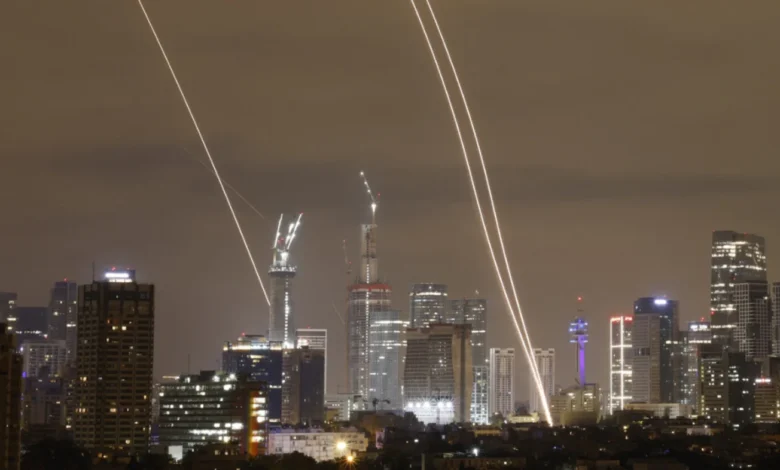Israel, US exhausting supplies of ballistic missile interceptors, source says

Israel is racing against time to destroy Iran’s launch capabilities as interceptor supplies run thin, former officials say
Israel is using its ballistic missile interceptors at a rapid clip after four days of war with Iran, a senior US official familiar with efforts to resupply Israel told Middle East Eye.
In some quarters of the US government, there are concerns that a direct US strike on Iran could lead to bigger Iranian retaliation against Israel that would drain the US’s global stockpile of missile interceptors to a “horrendous” level, the official said.
Israel relies on a three-tiered air defence system, and Iran’s attacks are challenging its most sophisticated defences.
The Iron Dome is used to shoot down short-range rockets and drones fired by groups like Hamas and Hezbollah. The second level is David’s Sling, which can intercept heavier rockets along with some ballistic missiles. The Arrow 2 and 3 systems are used to down ballistic missiles, with the latter able to shoot down exoatmospheric hypersonic missiles.
Replenishing the Arrow systems has been a perennial problem for Israel.
MEE reported in September that Israel was struggling to replenish Arrow interceptors after Iran’s first attack on Israel in April last year. The US and Israel jointly produce Arrow interceptors.
“The types of interceptors that are required to shoot down ballistic missiles are expensive and difficult to produce in mass quantities,” Dan Caldwell, a former senior Department of Defense official in the Trump administration, who opposed military confrontation with Iran, wrote on X.
“I will assume Israel has stockpiled a decent number of Arrows and Stunners for its David’s Sling but they have to had expend[ed] many of those against the Houthis and during Iran’s previous missile attacks last year. It is therefore likely that Israel and US are going to have to start rationing their interceptors soon,” he added.
Iran has fired at least 370 ballistic missiles at Israel since 13 June, the Israeli prime minister’s press office said on Monday.
Thin margins
One advantage Israel enjoys that may help address the shortage of interceptors is its air superiority over Iran, which it appears to have obtained within four days of bombing.
Israeli warplanes are operating over Tehran in daylight hours. According to Israel’s military, they have taken out about one-third of Iran’s surface-to-surface missile launch capabilities.
Josh Paul, a former US State Department official who resigned in protest against US support for Israel’s war on Gaza, told MEE that Israel has selectively targeted Iran’s launch capabilities.
“We don’t know how much more Iran can launch. I think it is a problem more of launchers than missiles,” he said. However, the two US officials MEE spoke with said that Iran is still holding back in its missile attacks, partly at least to avoid the US directly joining Israel in offensive operations.
Three Arab officials, including some whose countries are mediating between the US and Iran, told MEE on Monday that they believe the US is more likely than not to directly intervene in Israel’s offensive strikes.
The US’s carefully constructed line between intervening or not is growing thinner, though. Several current and former US officials who spoke to MEE described the US as “co-belligerent” to the conflict because it is actively participating in Israel’s defence.
The US is trying to make up for a shortfall in Israel’s own interceptors, the officials say.
The US has shot down Iranian missiles using at least one Terminal High-Altitude Area Defence antimissile battery in Israel. The US also has several Patriot antimissile batteries across the region.
Notably, a separate US defence official confirmed to MEE on Monday that the US has fired SM-3 air-defence missiles to protect Israel.
The SM-3 is the ship-mounted version of the Patriot. The official said the USS Arleigh Burke guided missile destroyer participated in Israel’s defence from the eastern Mediterranean.
Defence analysts noted that during the US’s 2024 campaign against the Houthis in Yemen, the US Navy fired a year’s worth of SM-3 interceptors in a single day.
As the war between Israel and Iran enters its fifth day, the US is sending more military assets into the theatre of operations.
The USS Nimitz aircraft carrier is en route from the South China Sea to the Middle East, according to ship tracking data. The aircraft carrier USS Carl Vinson is already in the Middle East.









